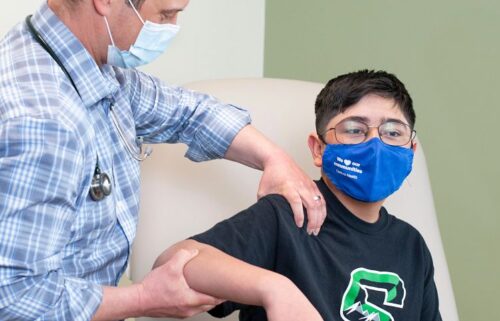Colorado’s epidemic curve declining, signaling Omicron peak may be over
EL PASO COUNTY, Colo. (KRDO) - A new statewide modeling report from the Colorado Department of Public Health and Environment and Colorado School of Public Health suggests Colorado's COVID-19 epidemic curve is declining, and will continue to decline over the next few weeks. But, we're not out of the woods quite yet, as Omicron infection remains at high levels.
El Paso County Public Health also confirms we are seeing a significant decreasing pattern in case numbers locally.
"We think that we peaked on January 15, which was the highest single day incidence so far," said Fadi Youkhana, an Epidemiologist for EPCPH's Office of Analytics and Data. "We were averaging about 1,800 cases on January 15. That's for our seven day average daily cases. Right now, we're averaging about 1,200.”
This trend should continue into February, but it will be gradual, considering the spike in omicron cases was record-breaking. Colorado COVID-19 Modeling Group estimates that one in 19 Coloradans is currently infectious. The group also estimates Omicron has infected roughly 42 percent of the Colorado population to date. By late-February, they estimate that this will increase to 65 percent, meaning more people will get sick over the next few weeks.
"One of the side effects of the rise and the curve, is it was so drastic and it reached such high levels, that coming down from it and establishing previous levels will take some time," said Youkhana. "I do want to mention, that we are trending in the right direction, but we're still seeing 1,200 cases a day. That's an incredible number to say out loud."
Colorado Department of Public Health and Environment says immunity to omicron is high and rising, and their modeling estimates that 80 percent of the state population will be immune to omicron by mid-February. But that doesn't mean the world will go back life as we knew it pre-pandemic, especially if a new variant pops up.
"We've heard about herd immunity from the very beginning," said Youkhana. It's sort of a moving line, because every time you have a new variant, it changes the calculation and every time you have a prolonged period, it changes the calculation. Herd immunity is not a static number that you establish at the very beginning, and then you chase it all the way through."
There are two factors that go into population immunity: those who are vaccinated and those who have been infected, and neither immunity lasts forever.
"Those two together play a role in an overall population health, and even though they both play together, evidence has shown that they both wane over time," said Youkhana. "So it's not a one-time thing that if you get infected or you get vaccinated, you're done. The longer that you are removed from the event, the waning protection occurs."
Despite the promising news that the worst may be over with the omicron wave, the overall message from health experts continues: do not let your guard down.
“It is encouraging to see this modeling report suggest we have moved beyond the peak of our omicron surge, and that we should continue to see declining COVID-19 transmission in Colorado in the coming weeks,” said Dr. Rachel Herlihy, state epidemiologist. “There are still high levels of COVID-19 circulating in the state, so we ask Coloradans to remain cautious and continue to follow public health guidance to help protect themselves and others — get vaccinated, get a third dose as soon as it is time, wear a mask in public, and avoid large gatherings. Together we can work to ensure case rates continue to decrease in Colorado.”




